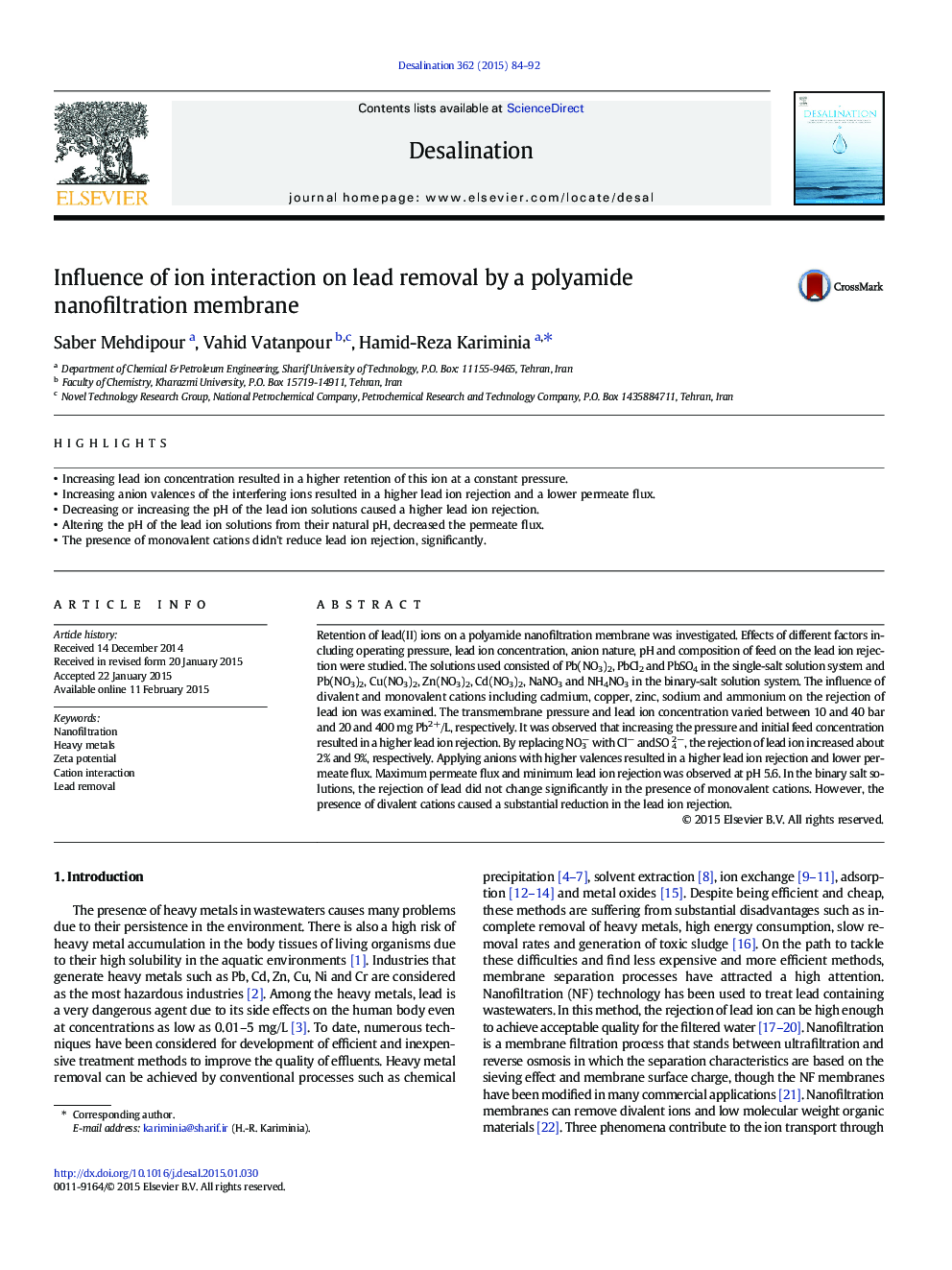| کد مقاله | کد نشریه | سال انتشار | مقاله انگلیسی | نسخه تمام متن |
|---|---|---|---|---|
| 623257 | 1455333 | 2015 | 9 صفحه PDF | دانلود رایگان |
• Increasing lead ion concentration resulted in a higher retention of this ion at a constant pressure.
• Increasing anion valences of the interfering ions resulted in a higher lead ion rejection and a lower permeate flux.
• Decreasing or increasing the pH of the lead ion solutions caused a higher lead ion rejection.
• Altering the pH of the lead ion solutions from their natural pH, decreased the permeate flux.
• The presence of monovalent cations didn't reduce lead ion rejection, significantly.
Retention of lead(II) ions on a polyamide nanofiltration membrane was investigated. Effects of different factors including operating pressure, lead ion concentration, anion nature, pH and composition of feed on the lead ion rejection were studied. The solutions used consisted of Pb(NO3)2, PbCl2 and PbSO4 in the single-salt solution system and Pb(NO3)2, Cu(NO3)2, Zn(NO3)2, Cd(NO3)2, NaNO3 and NH4NO3 in the binary-salt solution system. The influence of divalent and monovalent cations including cadmium, copper, zinc, sodium and ammonium on the rejection of lead ion was examined. The transmembrane pressure and lead ion concentration varied between 10 and 40 bar and 20 and 400 mg Pb2 +/L, respectively. It was observed that increasing the pressure and initial feed concentration resulted in a higher lead ion rejection. By replacing NO3− with Cl− andSO 42 −, the rejection of lead ion increased about 2% and 9%, respectively. Applying anions with higher valences resulted in a higher lead ion rejection and lower permeate flux. Maximum permeate flux and minimum lead ion rejection was observed at pH 5.6. In the binary salt solutions, the rejection of lead did not change significantly in the presence of monovalent cations. However, the presence of divalent cations caused a substantial reduction in the lead ion rejection.
Journal: Desalination - Volume 362, 15 April 2015, Pages 84–92
